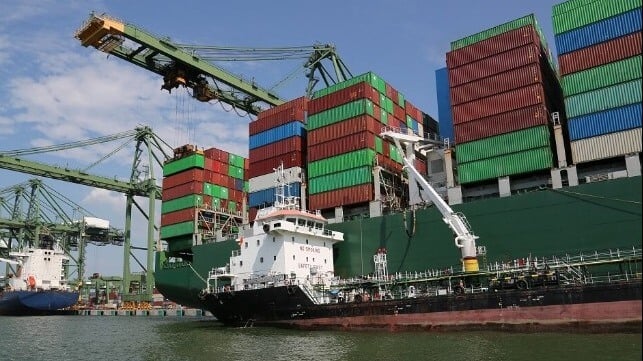Singapore-Based Biofuel Project Completes Two Supply Chain Tests

The most comprehensive testing of biofuels to date within the shipping industry marketed a key milestone last week completing trialing of two supply chains of biofuel blends operating between Singapore and Rotterdam. The project headed by the Global Center for Maritime Decarbonization in Singapore involves containerships, tankers, and bulkers from a range of companies aiming to establish an assurance framework for the supply chain of sustainable biofuels.
While companies have been reporting positive results from their individual tests, this project seeks to provide a much broader basis to accelerate the adoption of biofuel blends across the shipping industry. First announced in July 2022, the full project involves 19 industry partners and 13 vessels. GCMD plans to test five supply chains and also provide a framework that will provide emissions abatement assurance for future synthetic and bio-derived drop-in fuels.
This phase of the project started on October 31, 2022, and ran through February 15, bunkering approximately 4,700 MT of sustainable biofuel blends with the last of five vessels involved to consume the remainder of the test fuel by the end of February. Two sustainable biofuel blends were used. One was Used Cooking Oil Methyl Ester (UCOME), a type of Fatty Acid Methyl Ester (FAME), blended with Very Low Sulphur Fuel Oil (VLSFO) while the other was UCOME blended with High Sulphur Fuel Oil (HSFO). The UCOME used in both biofuel blends is produced from residue or feedstocks labeled 100 percent waste and is ISCC certified.
Chevron provided the VLSFO 24 percent biofuel blend to the CMA CGM Maupassant and the MOL Endowment operated by ONE, as well as the HSFO 20 percent biofuel blend to its Singapore Voyager and the Elizabeth I.A. that is owned by Angelicoussis Group and managed by its oil tanker shipping unit, Maran Tankers. In a separate supply chain, TotalEnergies Marine Fuels provided VLSFO to Lycaste Peace which is owned by NYK and chartered to Astomos Energy Corporation.
“Through these trials, we have gained a better appreciation of the complexities of real-world operations,” said Dr. Prapisala Thepsithar, director of projects at GCMD and project lead on this drop-in fuel assurance pilot. “We have learned the hard lesson that not all tracing techniques are directly applicable for tracing sustainable biofuels as they stand, and we are currently undertaking efforts to refine their deployment.”
A key part of the project was permitting the bunkering to happen under business-as-usual conditions using the fuel suppliers and bunkering locations chosen by the shipping companies. GCMD was responsible for bringing together the marine fuel purchases and suppliers and handling the dynamics such as vessel scheduling, equipment, and asset availabilities.
GCMD is coordinating with the surveyors, tracer technology, and laboratory testing to enable end-to-end tracing of the biofuels during the trials. Physical tracers are being added and biofuels and their blends are being carefully sampled. The partners also agreed to shipboard sampling and provided data to GCMD which will be used to quantify the emissions.

that matters most
Get the latest maritime news delivered to your inbox daily.
“The lack of assurance on the quality, quantity, and emissions abatement of biofuels is a pain point we identified from interviewing more than 100 industry stakeholders,” explained Dr. Sanjay Kuttan, CTO of the Global Centre for Maritime Decarbonisation. “These trials were curated to address this gap. In developing a framework to provide transparency and bolster the integrity of the biofuels supply chain, we hope to increase user confidence and decrease the barrier for wider adoption.”
Over the three months during which the trials took place, GMDC reports the quality of the biofuel blends remained stable. They are proceeding to the data collection for the three other supply chains in the project. GCMD is working with Boston Consulting Group to develop a robust framework for GHG accounting and conduct a cost-benefit analysis of deploying biofuels. The full project was expected to run for 12 to 18 months.
